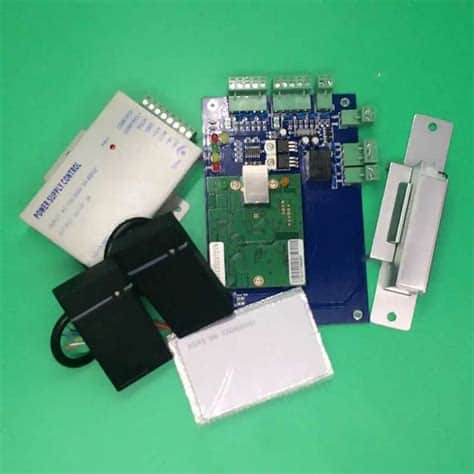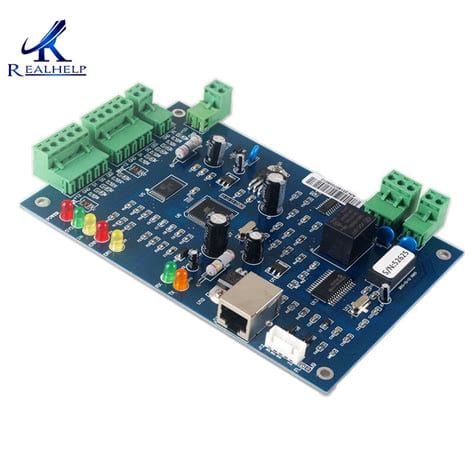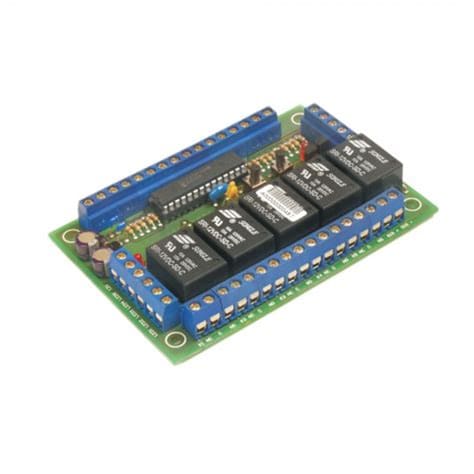Introduction
Door access control systems are critical components of building security, designed to restrict and manage access to specific areas within a facility. While there are various types of door access control systems available, standalone systems based on a single printed circuit board (PCB) are often considered a cost-effective and simple solution. However, this article will explore the inherent security vulnerabilities associated with single PCB standalone door access control systems and discuss why they may not be the most secure design choice.
The Basics of Door Access Control Systems
Before delving into the specific issues related to single PCB standalone systems, it is essential to understand the basic components and functionalities of door access control systems.
Components of a Door Access Control System
A typical door access control system consists of the following components:
- Access Control Unit (ACU): The ACU is the central processing unit that manages the entire system, making decisions based on user credentials and access rights.
- Readers: Readers are devices that capture user credentials, such as keypads, card readers, or biometric scanners.
- Locking Mechanism: The locking mechanism, usually an electric strike or magnetic lock, physically secures the door and is controlled by the ACU.
- Door Sensors: Door sensors detect the state of the door (open or closed) and can trigger alarms if the door is left open for an extended period or forced open.
- Power Supply: A power supply unit provides the necessary electrical power to operate the system components.
Types of Door Access Control Systems
Door access control systems can be broadly categorized into three types:
- Standalone Systems: These systems operate independently, with all components and access rights stored within the ACU. They do not require a network connection or centralized management.
- Networked Systems: Networked systems connect multiple ACUs to a central server, allowing for centralized management, monitoring, and reporting. Access rights and user credentials are stored on the server.
- Wireless Systems: Wireless systems use radio frequency (RF) or Wi-Fi communication to connect readers and ACUs, eliminating the need for extensive wiring.

Security Vulnerabilities of Single PCB Standalone Door Access Control Systems
1. Limited Processing Power and Memory
Single PCB standalone systems often have limited processing power and memory due to their compact design and cost constraints. This limitation can result in several security issues:
- Reduced Encryption Strength: With limited processing power, the system may not be able to support strong encryption algorithms, making it easier for attackers to intercept and decrypt sensitive data.
- Insufficient Event Logging: Limited memory capacity may prevent the system from storing comprehensive event logs, making it difficult to investigate security incidents or detect patterns of suspicious activity.
2. Lack of Redundancy and Failover
Standalone systems rely on a single PCB to control access and manage the system. If the PCB fails or is tampered with, the entire system becomes non-functional, leaving the facility vulnerable to unauthorized access. The lack of redundancy and failover mechanisms in single PCB systems can lead to extended downtime and compromised security.
3. Absence of Real-Time Monitoring and Alerts
Without a network connection or centralized management, single PCB standalone systems cannot provide real-time monitoring or generate alerts when suspicious activities are detected. This limitation makes it challenging to promptly identify and respond to security breaches, as security personnel may not be immediately aware of the incident.
4. Vulnerability to Physical Tampering
Single PCB standalone systems are more susceptible to physical tampering than networked or wireless systems. Attackers can gain access to the PCB by removing the reader or control panel, allowing them to:
- Bypass the locking mechanism by directly connecting to the PCB’s output ports.
- Extract sensitive information, such as access codes or user credentials, from the PCB’s memory.
- Modify the PCB’s firmware to grant unauthorized access or disable security features.
5. Difficulty in Updating and Maintaining the System
As standalone systems do not have a centralized management platform, updating and maintaining them can be a time-consuming and labor-intensive process. Security personnel must physically access each PCB to perform firmware updates, change access rights, or troubleshoot issues. This decentralized approach can lead to inconsistencies in system configurations and increase the risk of human error.

Best Practices for Secure Door Access Control Systems
To mitigate the security risks associated with single PCB standalone systems, consider implementing the following best practices:
-
Opt for Networked or Wireless Systems: Choosing a networked or wireless door access control system allows for centralized management, real-time monitoring, and the ability to respond quickly to security incidents.
-
Implement Strong Encryption: Ensure that the system uses strong encryption algorithms to protect sensitive data, such as user credentials and communication between components.
-
Enable Comprehensive Event Logging: Configure the system to log all access attempts, door state changes, and administrative activities. Regularly review the logs to identify suspicious patterns or anomalies.
-
Employ Tamper Detection and Alerting: Install tamper switches on readers and control panels to detect physical tampering attempts and generate alerts when triggered.
-
Regularly Update Firmware and Software: Keep the system’s firmware and software up to date with the latest security patches and features to address known vulnerabilities.
-
Implement Multi-Factor Authentication: Enhance security by requiring users to provide multiple forms of authentication, such as a card and a PIN or biometric data, to gain access.
-
Conduct Regular Security Audits: Perform periodic security audits to assess the system’s effectiveness, identify weaknesses, and implement necessary improvements.

Frequently Asked Questions (FAQ)
-
Q: Can single PCB standalone door access control systems be upgraded to networked or wireless systems?
A: In most cases, upgrading a single PCB standalone system to a networked or wireless system would require significant hardware and wiring changes, making it more cost-effective to replace the entire system. -
Q: How often should firmware and software updates be applied to door access control systems?
A: Firmware and software updates should be applied as soon as they become available from the manufacturer. It is recommended to establish a regular update schedule, such as quarterly or semi-annually, to ensure the system remains secure. -
Q: What should be done if a door access control system is suspected to have been tampered with?
A: If tampering is suspected, immediately investigate the incident, assess the potential impact, and take appropriate actions, such as revoking access rights, replacing compromised components, and notifying relevant security personnel. -
Q: Can single PCB standalone door access control systems be integrated with other security systems?
A: Integration with other security systems, such as video surveillance or intrusion detection, may be limited or not possible with single PCB standalone systems due to their lack of network connectivity and centralized management. -
Q: How can the security of door access control systems be tested?
A: Regular security testing, such as penetration testing and vulnerability assessments, can help identify weaknesses in the system. Engage experienced security professionals to conduct these tests and provide recommendations for improvement.
Conclusion
While single PCB standalone door access control systems may offer a simple and cost-effective solution for managing access to facilities, their inherent security vulnerabilities make them less suitable for environments that require robust security. Limited processing power, lack of redundancy, absence of real-time monitoring, vulnerability to physical tampering, and difficulty in updating and maintaining the system are significant drawbacks that can compromise the overall security of a facility.
To ensure a more secure and reliable door access control system, it is recommended to opt for networked or wireless systems that provide centralized management, real-time monitoring, and the ability to respond quickly to security incidents. Implementing best practices such as strong encryption, comprehensive event logging, tamper detection, regular firmware updates, multi-factor authentication, and periodic security audits can further enhance the security of the system.
Ultimately, investing in a robust and secure door access control system is crucial for maintaining the safety and security of people, assets, and information within a facility. By understanding the limitations of single PCB standalone systems and adopting more advanced and secure solutions, organizations can effectively mitigate risks and protect their premises from unauthorized access.

No responses yet